
Highlight
Statue of Freedom
Statue of Freedom is the crowning feature of the United States Capitol Dome. The bronze statue stands 19 feet 6 inches tall.
Image Gallery








U.S. Capitol Building
The U.S. Capitol's dome made of cast iron was designed by Thomas U. Walter and constructed from 1856-1866 at the total cost of $1,047,291.
The United States Capitol Dome may well be the most famous man-made landmark in America. It is such a fitting finale for the building it crowns, so familiar and dignified, that it seems surprising that its design and construction came late in the U.S. Capitol's architectural evolution. Only the West Front terraces (1884-1892), the East Front extension (1958-1962), and the Capitol Visitor Center are more recent additions to the U.S. Capitol than its dome (1856-1866). It was designed by the Philadelphia architect Thomas U. Walter, who was also the architect of the House and Senate extensions. Montgomery C. Meigs, a captain in the Army Corps of Engineers, was the principal superintendent of construction. Together they oversaw the creation of the Capitol Building's most memorable and remarkable feature.
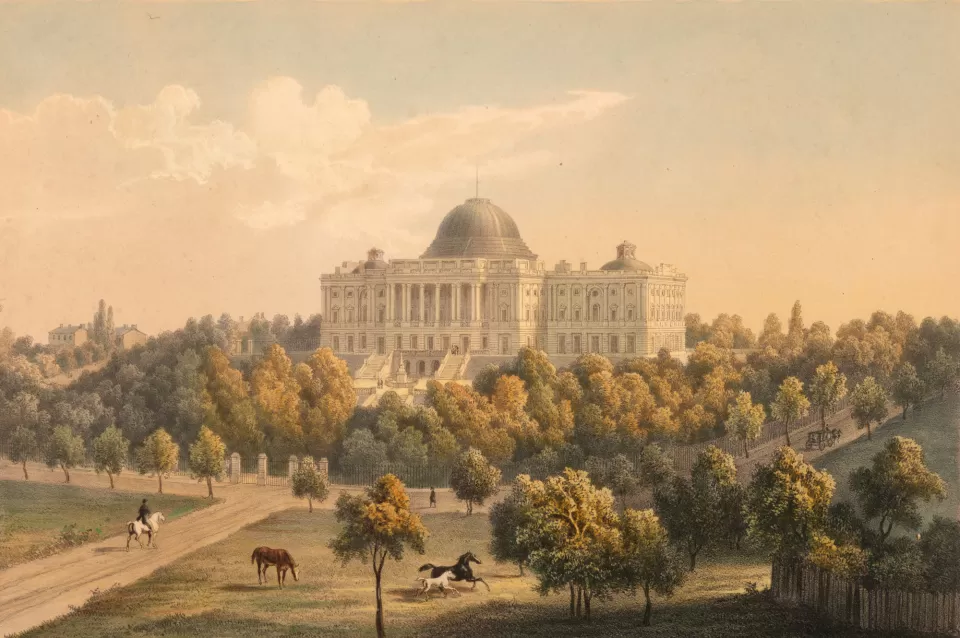
The U.S. Capitol's first dome was finished in 1824 to the design of Charles Bulfinch, a Boston architect who was bringing the building to completion after more than 30 years of sporadic construction. Bulfinch's low dome was constructed of wood covered by copper. Light was admitted through an oculus. By the 1850s, this dome was considered too small for the vastly enlarged Capitol Building. It was also a fire hazard and was in constant need of repair. For these reasons, a new fireproof dome was considered a necessary and practical improvement to the Capitol.
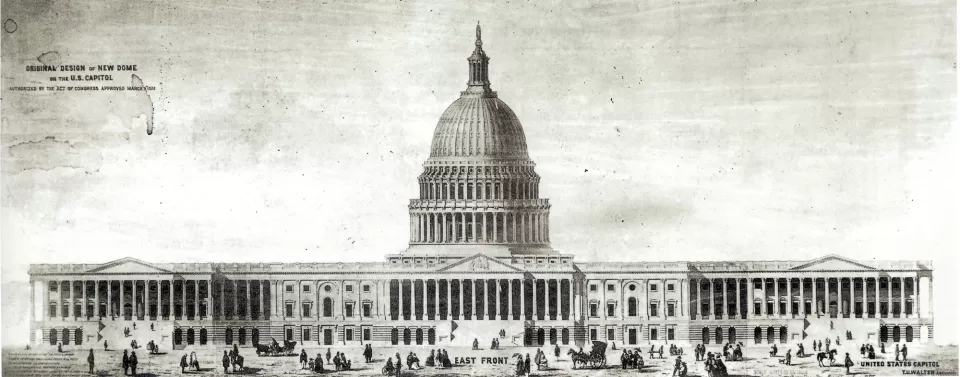
On December 16, 1854, Walter hung in his office a drawing of the U.S. Capitol as it would appear once the extensions were finished, but without the Bulfinch dome. Instead the drawing showed a new cast-iron dome with columns, pilasters, brackets, scores of windows and a crowning statue. While it was only a suggestion of what a new dome might look like, the drawing caused an immediate sensation among Congressmen and Senators who visited the Architect's office. Within 10 weeks, without committee hearings and after little debate, the House of Representatives appropriated $100,000 to begin construction of a new Capitol dome. The Senate agreed a few days later, and President Franklin Pierce signed the legislation on March 3, 1855.
The speed with which the new Capitol dome was authorized was unprecedented. On the strength of a single drawing Congress committed itself to one of the most ambitious undertakings in the history of American architecture. Although some Members thought the $100,000 would cover the entire cost of the work, Walter knew it would only get the job started and that the place to begin was at the drafting board, where details would be worked out over the next few months.
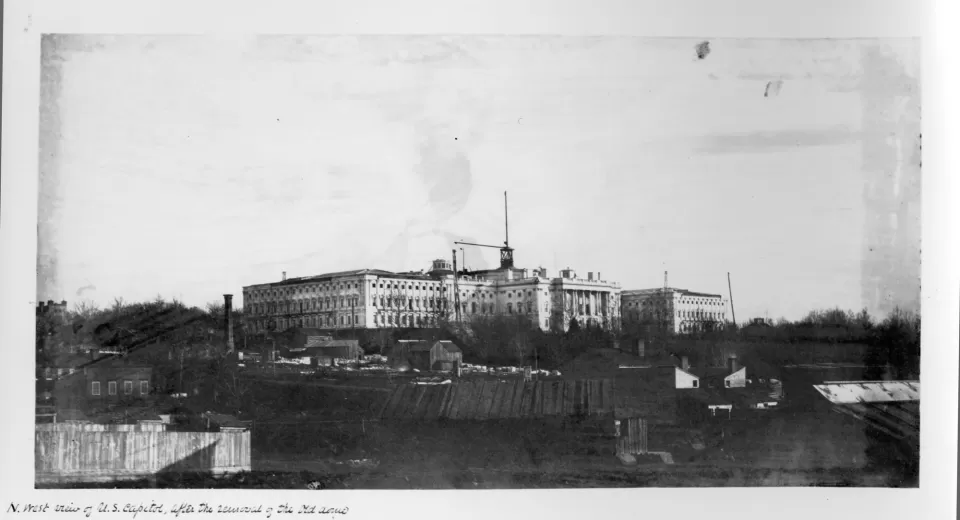
Bulfinch's wooden dome was removed in the fall of 1856. A temporary roof was installed over the Rotunda to protect it during the construction project. A wooden scaffold standing on the Rotunda floor passed through the eye of the temporary roof and held a boom and derrick that would lift, by steam-powered engines, the ironwork into place. The steam engines were fueled by wood salvaged from the old Capitol dome.
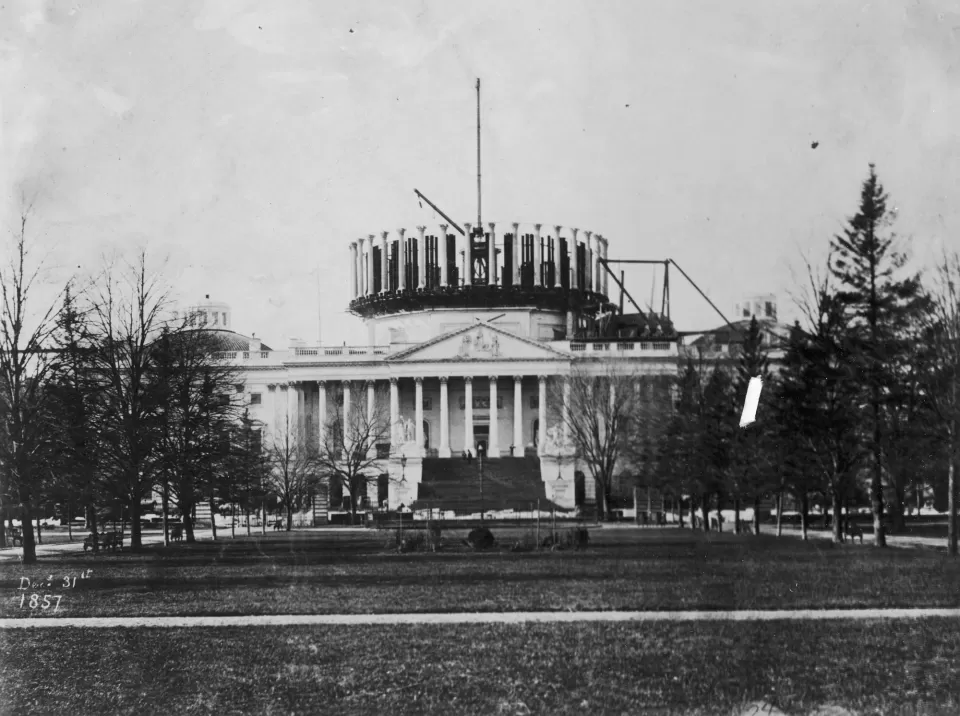
Work on the dome progressed at a rapid pace in 1857. Nearly all the columns of the peristyle were set on brackets embedded in 5,214,000 pounds of masonry built on top of the old Rotunda walls. In 1858 work slowed to a crawl due to conflicts between Walter, the architect, and Meigs, the supervising engineer. Walter refused to hand over drawings because Meigs often changed them without consultation. Meigs retaliated by refusing to approve the pay of Walter's draftsmen. While progress on the dome suffered, the dispute allowed time for Walter to revise the original design of the upper parts of the dome. The revisions had become necessary because of the statue that was commissioned for the top of the dome, the size of which was significantly larger than originally anticipated.
Walter's original design called for a statue 16 feet 9 inches tall. When the model of the statue was finished in the studio of Thomas Crawford, an American sculptor working in Rome, it stood 19 feet 6 inches. Walter was obliged to lower the overall height of the dome in order to broaden the platform that would carry the tholos, which, in turn, carried the statue. The revisions lowered the height of the dome from 300 feet to 287 feet. Walter also took the opportunity to redesign the interior, devising the double dome scheme based on the Pantheon in Paris, which he had seen in 1838.
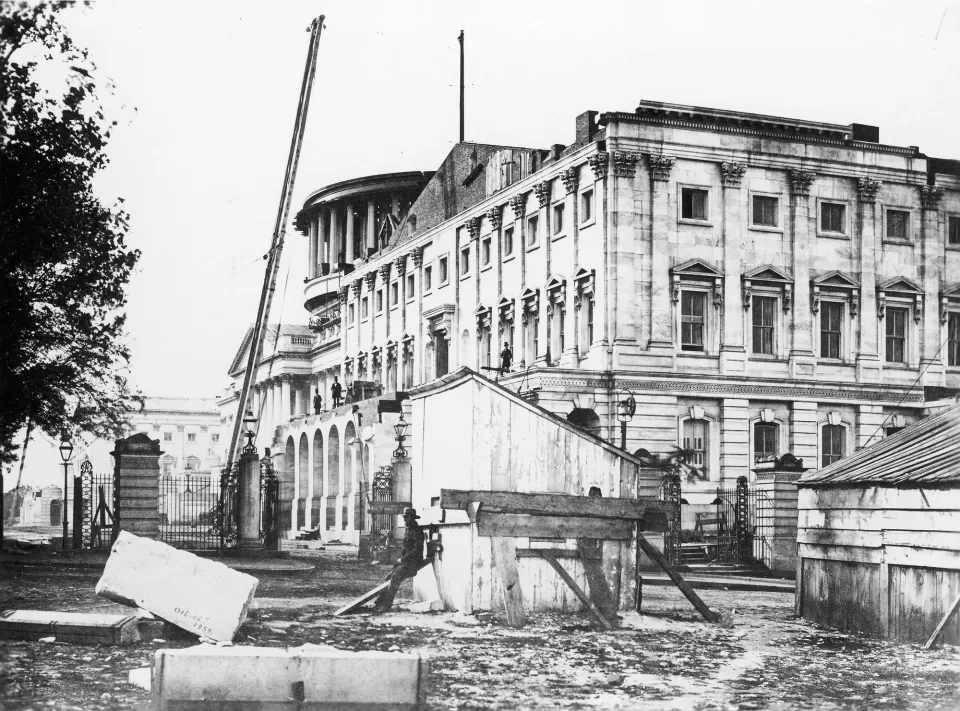
In the fall of 1859, Meigs was replaced by William B. Franklin as engineer in charge. A few weeks after taking his post Franklin received a proposal from the New York foundry of Janes, Fowler, Kirtland and Company. The firm proposed to finish all remaining work on the dome for 7 cents per pound "complete and put up." The offer was accepted in February 1860, placing the work under a single contract. Due to this arrangement, construction of the dome was uninterrupted by the outbreak of the Civil War in 1861. While work stopped on the U.S. Capitol extensions for a year, the dome continued to rise above the Rotunda.
On December 2, 1863, the last section of the Statue of Freedom was put in place on top of the dome amid a great celebration with military salutes. The interior of the dome was finished in January 1866 when the scaffolding was removed from below Constantino Brumidi's great fresco, the Apotheosis of Washington, 180 feet above the Rotunda floor. Walter resigned on May 26, 1865, and was succeeded by Edward Clark, who completed the last details of the dome.
In 2016 the Architect of the Capitol (AOC) completed a multi-year project to completely restore the Dome of the U.S. Capitol. The Dome had become plagued by more than 1,000 cracks and deficiencies due to age and weather. With the support of the United States Congress, hundreds of expert craftsmen worked day and night to restore the Dome to its inspiring splendor.

Highlight
Statue of Freedom is the crowning feature of the United States Capitol Dome. The bronze statue stands 19 feet 6 inches tall.








U.S. Capitol Building